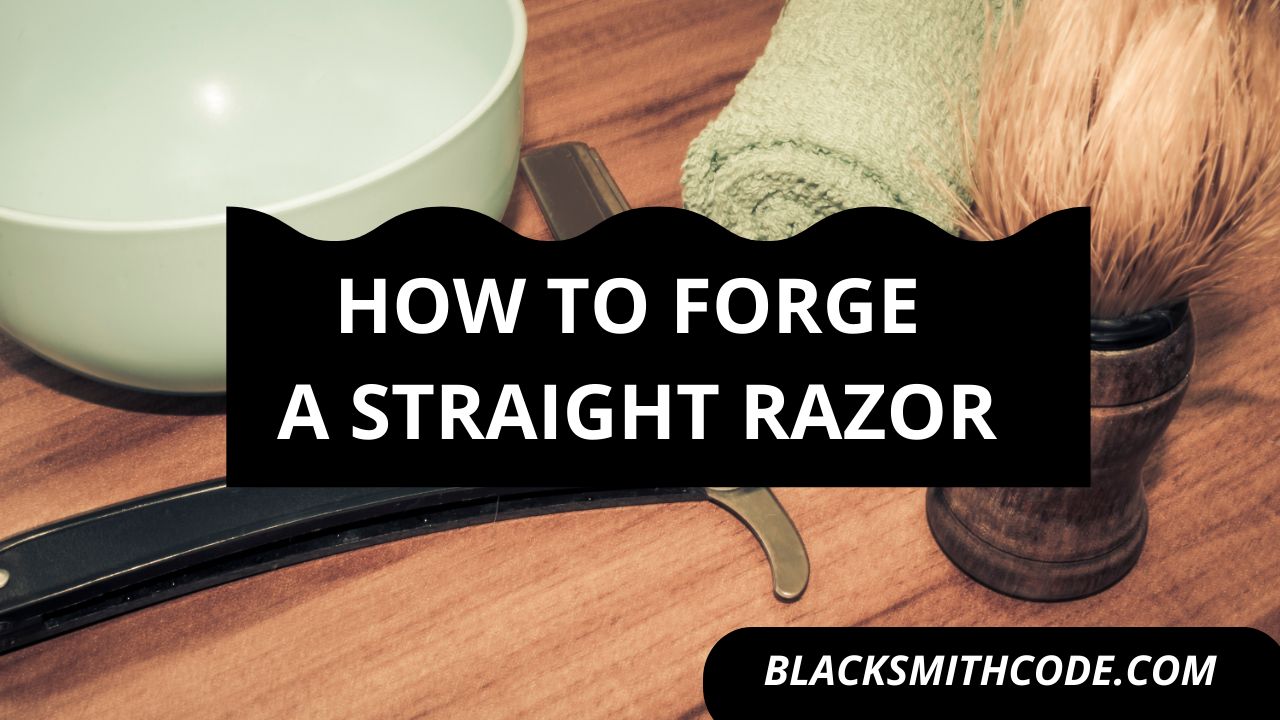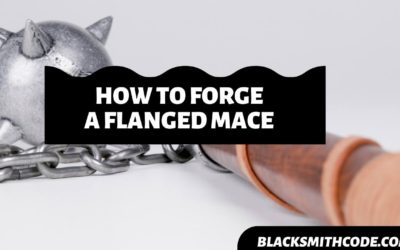Have you ever considered the diverse use of a straight razor and the efforts needed in making them? Forging a straight razor is an integral part of blacksmithing projects.
Buying a straight razor might cost you much. Therefore, learning to forge yours is a priceless asset because it will save you money if you need one. It will also provide you the opportunity of making a product of high commercial value.
The steps in forging a straight razor are precise and straightforward. However, it would be best if you had a proper guide to make it relatively more straightforward. Here are simple steps to help you through the process of forging a straight razor.
Essentials
The essential materials for the razor are not too different from the general blacksmithing tools. However, their availability is crucial for the completion of this process. The essentials for the forging process of a razor include;
Forge
Instructions on How to Forge a Straight Razor
Step 1: Get Your Materials
You should have it at the back of your mind that the primary use of a straight razor is for shaving. Therefore, you should get the materials that are suitable for such. A straight razor has three significant parts.
Note:
These parts are the razor, the handle, and the holder. The handle and the blade have the same material, which is precisely suitable steel. You can make the handle of the razor from other materials, including wood.

Step 2: Visualize Your Design
The plan for the razor varies, and it is highly flexible. Visualizing your design will guide you on the right path to follow. Also, it will help you decide on the right materials to get.
You can sketch your design. Alternatively, you can get a prototype you want to simulate.

Step 3: Choose The Perfect Metal
A straight razor has specific and delicate use, and this must reflect on the choice of steel. Unlike other projects where you can make use of any steel, this process is slightly different. Most professionals recommend O1 tool steel as the most suitable for forging a razor.
This choice is because O1 tool steel is stable during heat treatment, less expensive, and allows you to make a perfect edge. Alternatively, you can also use steel, commonly referred to as CPM-S35VN.
Step 4: Cut Your Blank
It is assumed that you are purchasing already refined steel. All you have to do is to cut it out in the shape that would fit your design. It is better to use markers or other indicators to draw the shape of the razor on the steel plate.
Quick Steps
- Rough cut the shape of the razor with a grinder. It is preferable to use one with a pferd cutting disc.
- Clean the result of the rough cut with a sander.
- Use Dremel sanding drums to fine-tune shaping.
- Do not wholly slim-fit the razor. Leave some space for the grinding process.
Step 5: Grinding
The process in forging a straight razor aims to sharpen the razor flat. Although you have to grind your blade from point flat to point, you should be cautious of leaving out space for your heat treatment.
You might have to grind the blade on both sides if you are using a small grinder. If you make the edge too thin, it can melt during heat treatment.
Step 6: Heat Treat Your Blade
Heat treatment is an integral part of making a blade. Use a suitable forge to the required temperature. Cool the metal rapidly to give a hardening effect.
You can also make use of a heat treatment plant if you want something more comfortable and faster.
Step 7: Fix The Holder
The holder of the razor can be any material ranging from timber to plastic. This choice is highly flexible, and it is dependent solely on the decision of the blacksmith.
The type of holder you want to make will determine the procedure to follow. You can either purchase an already made handle or make yours. However, it is essential to ensure that the holder is a perfect fit for the razor.
Note:
It should protect the blade while also making it handier. It would be best if you had decided on the handle at the beginning of the project. This decision will guide you through the design process of your razor.
Step 8: Finishing
The finishing process includes the attachment of the razor to the holder. But before then, you should fine-tune both the blade and the holder.
Quick Steps
- Fine-tune your razor to give the final and perfect outlook.
- Create a point of attachment on the blade to fix the holder.
- Pin the blade and the holder together, depending on the type you are using. The most common type of joint is a pivot joint. And you would need a pivot pin for the attachment.
FAQs on How to Forge a Straight Razor
Question
What are the materials that I can use for my razor handle?
A lot of materials are suitable for being the handle of your razor. The choice of the material to use is dependent on your design, your budget, and the purpose of your razor. The razor handle materials include plastic, metal, timber, carbon fiber, Perspex, micarta, and rubber.
Question
Can I forge a straight razor with scrap metal?
The material you use in forging your straight razor has a significant influence on the outcome and purpose. Some specific steels are suitable for this procedure. You can only make use of the scrap metals provided that they are from these types of steel.
Question
Is it right to use the same metal for both the razor and the handle?
Yes, it is possible to make use of the same metal for the blade and the handle. It is, however, not advisable. It is better to use complementing material.
Video
Precautions
It is essential to take all necessary precautions while forging a straight razor. These precautions include;
- Always remember to protect your blade all through the forging process.
- Handling hot metals requires precise caution. Do not judge the temperature of a metal by its color.
- Ensure the proper use of your safety gear all through this process.
References
1. https://www.instructables.com/id/Cut-throat-razor/
2. https://www.tharwavalleyforge.com/courses/all-courses/japanese-razors/157-straight-razors
3. https://www.youtube.com/watch?v=vcI2sylWW3g
4. https://www.youtube.com/watch?v=P7UZSeO3Xbw
5. https://www.manmadediy.com/3796-how-to-build-a-classic-wood-handled-straight-razor-from-scratch



